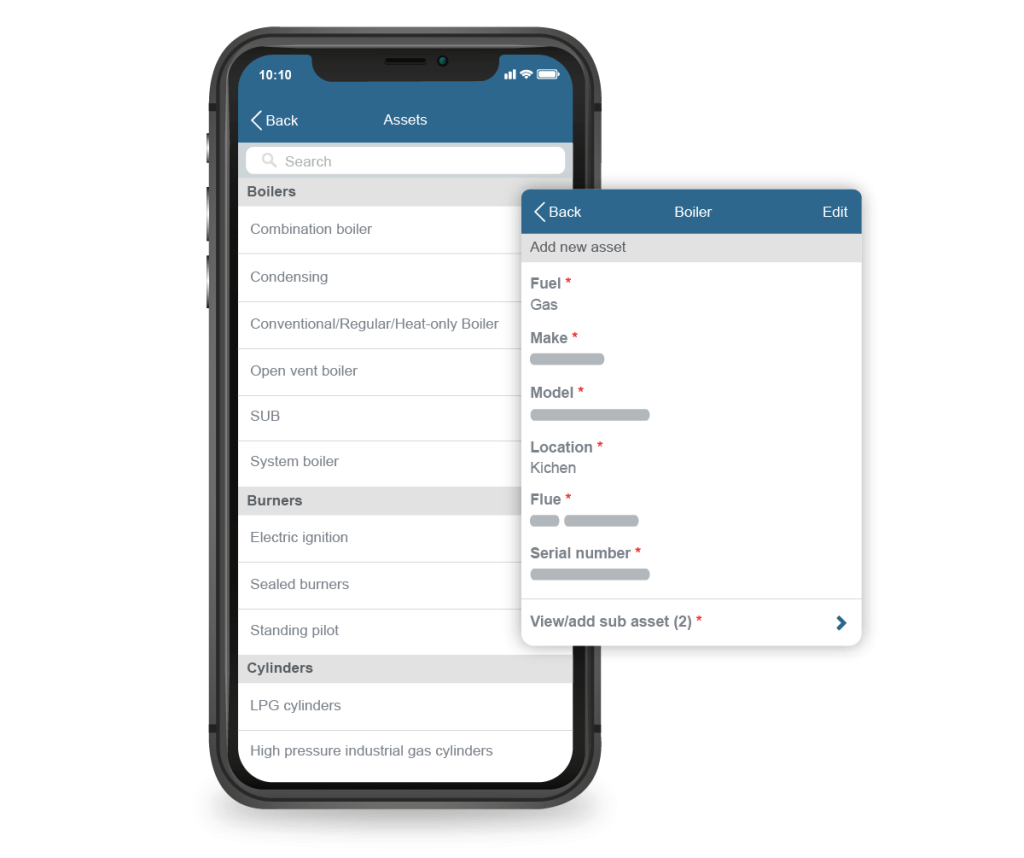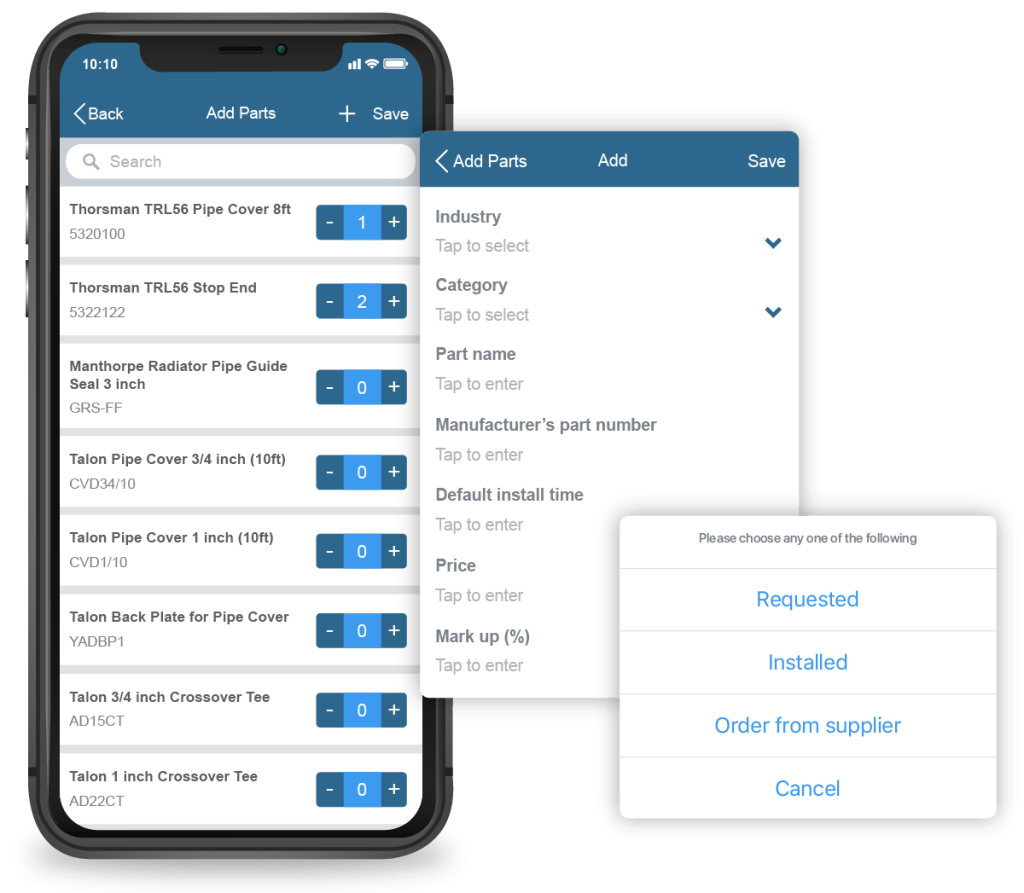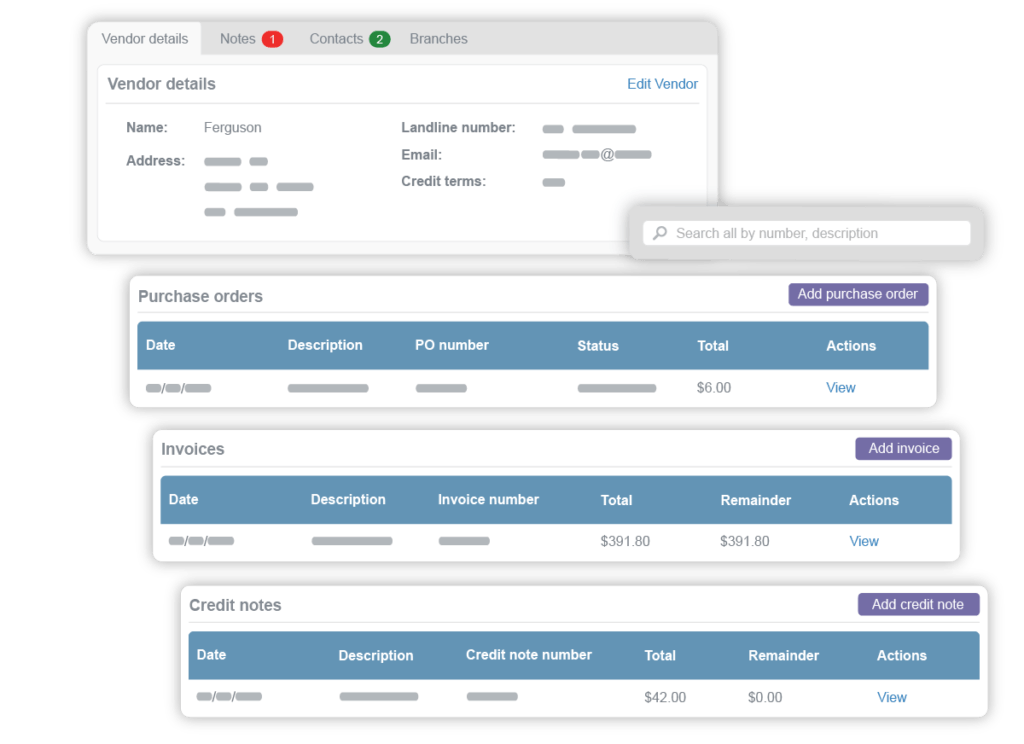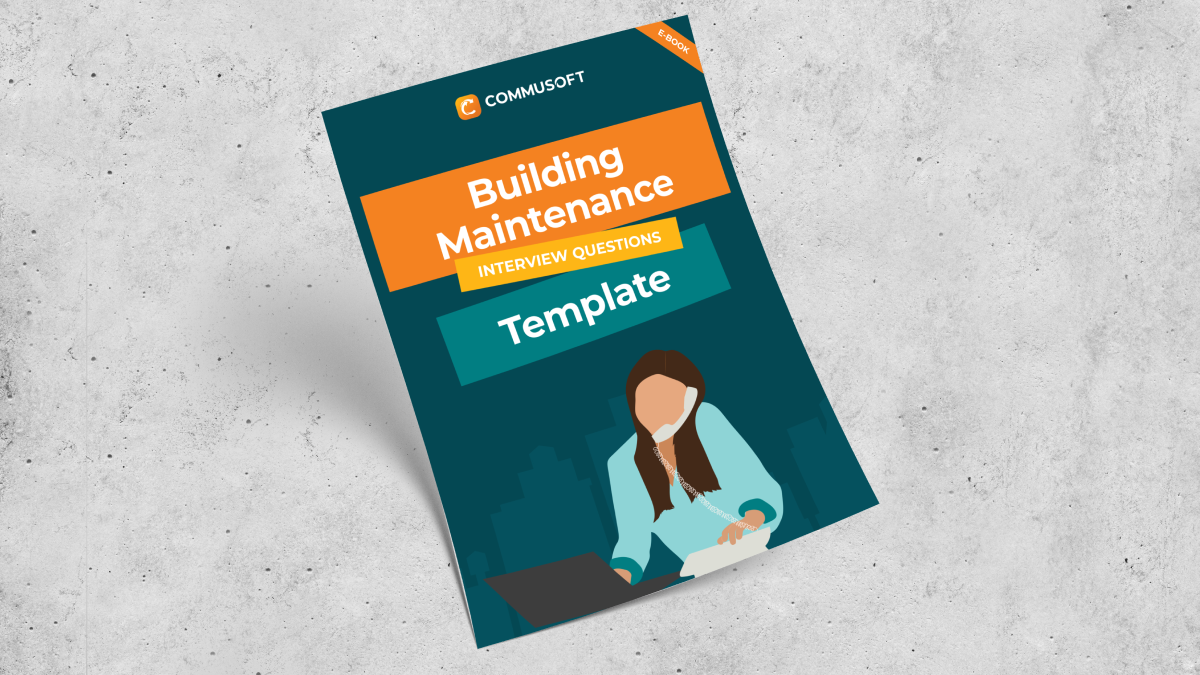Having a flexible pricing system, like an HVAC price book, is crucial for HVAC businesses to effectively manage each commercial and residential service offered.
If you value organization, price books provide clear overviews, ensuring you charge customers consistently and accurately, every time.
Listing out all of your service rates can be a large undertaking, but it will be beneficial for your company.
Why? Because most customers actually prefer flat rate pricing, as it leaves no unforeseen variables.
Sure, there’s always the chance that if your price book seems too high you might not win the job, but if your pricing is too low, it can hurt your revenue.
This post will help you create the ultimate HVAC price book for any job you take on, keep reading for all you need to know:

What is an HVAC Price Book?
An HVAC price book is an internal document or catalog listing all the flat-rate prices for each service you offer, such as installation, maintenance, or repair.
Your HVAC price list can be further broken down into the prices of material costs, including parts and equipment used by your HVAC technicians, as well as the cost of their labor.
A flat rate price book ensures your team prices your services with accuracy.
Pros and Cons of Flat Rate Pricing
Picture this: You’ve just hired Dan. He’s a great HVAC technician, but on the younger side with less experience. It’s his second week on the job, and he’s gone to look at an air conditioning unit that hasn’t been working properly.
Dan wants to impress and goes through every step of the diagnostic perfectly. It takes him about two hours to service the unit and get it back to normal again. He hands the customer the bill, which is broken down by time and materials. His hourly rate is $100 and the replacement part is charged for $30. However, for a simple repair, $230 is a hefty bill.
Now, if you had sent Luke—a senior tech at your company—he could have completed the job in under an hour. His bill would have been nearly half of Dan’s. But is it fair for Luke to get paid less just because he has more experience? And is it fair for your customers to pay more just because they had a less practiced tech for the service?
We’d say no, and you probably would, too. That’s where flat rate and flat rate books come in.
Having set prices for your services lets customers know the maximum they’ll have to pay—no matter who is doing the job.
Likewise, it’s making sure your HVAC technicians are being paid fairly for their time. It’s a win-win situation.
That is, if your flat rate pricing is accurate. If you underestimate the cost of a service, you’ll be getting underpaid. If you overestimate the cost of a service, customers are likely to take their business elsewhere.
Learn more about flat rate pricing from our expert, Danielle Putnam!
Residential Price Books vs. Commercial Price Books
If your HVAC business works with both commercial and residential customers, having separate price books can make your operations much smoother.
Residential HVAC Price Book
Warranty work is a big aspect of residential HVAC services. Further, any seasonal service bundles and discounts or coupons your business offers factor into your pricing.
In contrast to commercial services, residential jobs are more standardized. For example, if your HVAC team manages a high volume of the same service type that requires the same parts and time on site, flat rate pricing can streamline your sales and job booking processes.
Commercial HVAC Price Book
Compared to residential, commercial appliances usually cost more. Therefore, to maintain profit margins, your flat-rate pricing needs to take these differences into account. Further, commercial assets may require a technician with an advanced skillset, meaning a higher labor rate.
Service contracts can have a considerable effect on pricing depending on how your team builds and sets pricing for each contract, discounts and coupons offered, and maintenance schedules.
Discover how service contract management software can help!
Six Steps to Build your HVAC Price Book:
With these residential and commercial considerations in mind, here are six steps to take to build your HVAC price book.
1. Categorize Your HVAC Services
Listing out all the different services your team undertakes is a great place to start.
Common HVAC services include:
Remember, for both commercial and residential, each service will have a different scope of hours, number of HVAC technicians, and skills required.
2. Price Your HVAC Services
There’s a lot to take into consideration when pricing your services. Location, customer demographics, and your team’s experience are all variables you’ll need to consider. While there is no singular answer for how much you should charge, there are steps you can take to make a sound decision.
The last thing you want to do is guess your flat rate fees or base them on a competitor’s price book. Mainly because you can never know what kind of corners they may cut, so focus on what works for your own business.
First: Add up Your Expenses
- The cost of rent for your office and warehouse.
- Your business costs for marketing campaigns, accountants, lawyers, etc.
- The cost of your inventory and equipment.
- Your technicians and administrative staff’s salaries, benefits, and insurance costs.
Next: Determine Your Net Income
- Calculate your company’s total revenue.
- Subtract your business expenses (calculated in Step 1).
- Then, deduct tax.
Net Income = Total Revenue – Business Expenses – Tax
Then: Calculate Your Profit Margins
- Divide net income by total revenue.
- Multiply the number by 100 to get your net profit margin percentage.
(Net Income / Total Revenue) = X
(X) x 100 = Net Profit Margin
While the formula stands, these numbers are just an example.
20% is on the higher end for the industry standard profit margin, so figure out what makes the most sense for your business. Most companies have about a 10% profit margin–but that doesn’t mean you have to do the same.
Take into account your target market and what they’re willing to pay. If you target young homeowners, they might not have a lot of disposable income, but if you’re going after premium customers, they’ll only hire the best (and pay to get it!).
Consider all the variables mentioned above and decide what will be the most sustainable for your company.
If you’re still having trouble, here are some more tips for learning what you should charge.
3. Create Your HVAC Price Book With Key Elements
Once you’ve priced out your services, it’s time to put together your HVAC price book with invoicing software. Here are our best practices for organizing it:
List out Prices and Procedures
You spent ample time determining your flat rate pricing for your price book, so make sure it’s easy for everyone to be on the same page. Detail the procedures technicians should take when quoting customers.
Will they offer one flat price, or do you have good, better, and best options for them to quote as well? When you can present a customer with multiple products or options with tiered pricing, there’s a higher chance they’re going to accept your proposal.
Also make sure it’s easy to differentiate the flat rate pricing between service, repairs, and maintenance. You don’t want your team to get confused and offer the wrong pricing for a service.
Fortunately, when you use software, it’s easy to structure your HVAC price book so there is no confusion.
Include Pricing Options for Different Customers
Maybe you’ve worked with some customers for 10 years and have always offered them special rates. That’s great customer service! But when switching over to flat rates, make sure your price book is still reflective of this.
Create a separate section for technicians to refer to when working with these customers. To make it easier, make sure you log detailed notes in your customer database software for them to reference.
Also, consider a separate pricing section for customers who work outside of your area. Build in a premium rate for them, as it will cost more for your team to travel out and service them.
If you’re going after facility maintenance contracts and are hoping to win more commercial work, designing your contracts and pricing your services accordingly will help you!
When you can confidently talk about your pricing and back it up with a self-service portal where clients can access the scheduling and documents they need, there’s a much higher chance you’ll win their business.
Have a General Section for Coupons and Discounts
It’s not unusual for HVAC companies to run special promotions throughout the year, so make sure your price book reflects these, too. Make it easy for technicians to reference and add these to a job, eliminating any confusion.
If you exclude this section from your HVAC price book, your technician may just change the price of the service to reflect the offer. This, however, means that you won’t be able to track how effective the discount was–giving no insight if this is a promotion worth running again.
Information on Warranties
Be sure to store warranty information in your price book! If a customer is still in warranty, but it’s unclear to your technician while on site, they may end up charging them full price for the service. This won’t leave a good impression on your customer and will result in a lot of work to correct down the line.
Clearly list out all procedures and options in your HVAC price book. For it to be successful, it needs to be easy to understand by the people who will be using it every day. This leads us to…
4. Regularly Update Your Price Book
Parts prices don’t stay the same forever. They may even change within the span of a few weeks. Think of your HVAC price book as a living document: it will never be completed and “done”. Therefore, it’s important to specify which team member(s) will be responsible for updating the prices.
Further, although less frequently, your labor rates will change too. Be sure to set time aside to make adjustments.
5. Train Your Team on Using the Price Book
At this point, you’ve probably put together the ultimate price book. It looks professional and has all of the information needed. But just because it makes sense to you, doesn’t mean it will immediately make sense to your team.
Like any other tool, your HVAC price book will require a learning curve. It’s a new way of pricing and you’ll need to train your technicians on it. Otherwise, they’ll come across as lacking confidence and unknowledgeable–which is never good when trying to make a sale.
So, before unleashing your awesome price book into the world, sit down and show it to your technicians. Walk them through each section and see if there’s any confusion. Maybe they’ll even have a suggestion or two on how you can improve it!
Then, role play a scenario with them. Although it might all look good on paper, when your techs start putting the price book into practice, you may find errors start popping up.
It might be a mistake in the actual resource, or a section that’s just causing confusion and being misinterpreted by your technicians–and there’s no respectable way to take that back once they’ve told it to a customer.
Also, if you’re switching from time and materials to a flat rate charge, prepare your technicians for customer objections. Change can be difficult, even if it’s for the better. Make sure your team is well-versed and prepared–because if they stumble on the spot it won’t make a good impression and may cost you the job.
For example, make sure they can explain to customers how flat rates benefit them. By using an HVAC price book, you’re able to offer them more accurate pricing since there are no variables at play.
Remember, you can have the best price book, but if your team can’t use it, it ultimately has no value. Invest time into training and ensure they’re confident in the tool before using it in the field. That way, you’re sure to win more jobs while increasing customer satisfaction.
6. Leveraging an HVAC Software
An HVAC software like Commusoft can optimize tracking all aspects of pricing. After all, having everything your admins, techs, and customers need in one place ensures your team can complete more each day while offering unmatched customer experiences.
When you take the leap and implement a software solution that grows with your business, you’ll be able to cater to a wider variety of customers and manage prices accordingly.
Managing Parts and Assets in One System

Naturally, inventory and customer asset maintenance constitute a considerable chunk of your office and field operations.
An all-in-one platform like Commusoft empowers technicians to update records directly from the job site with their field service mobile app.
Maintaining customer assets requires organization and dedicated recordkeeping. While on site, your crew should have the ability to digitally add and update appliance details including make/model, location on the property (especially helpful for large commercial facilities), service history, photos, and more.
With updated asset information, your team can arrive at appointments prepared with the right parts and equipment, know whether to recommend servicing or a full replacement, and access notes from past jobs. Going above and beyond has never been easier!

We understand that arriving prepared with the right parts every time is impossible.
That’s why enabling technicians to request or order parts from the job site is invaluable. This process not only speeds up completion rates, it also boosts customer happiness.
A coordinated parts and asset management workflow and tracking will streamline field operations. After all, stock and appliance prices have a considerable impact on service pricing. With everything streamlined, your technicians can complete jobs faster, reducing the overall time per service.
Furthermore, with everything tracked across your field service mobile app, you can be confident your pricing and revenue are accurate.
Using a Vendor Portal to Confirm Pricing

Staying in contact with each parts supplier is tedious when managed manually.
A dedicated vendor management software with a dashboard can help your admins oversee all communications with vendors, clarify parts prices, and manage purchase orders.
Furthermore, the best solutions allow your admins to request CSV files from vendors and upload them to your CRM, streamlining the entire process.
An optimized vendor management solution can help your team ensure the prices for your inventory are always up-to-date in your system. This will reflect in more accurate job costing.
Getting Started With Your HVAC Price Books
Charging by flat rates is a great option for a field service business, and can be especially successful with a great HVAC price book.
Although it’s tempting to implement your new pricing structure right away, be sure to:
- Invest enough time to determine what makes the most sense for your company.
- Calculate your rates accurately and thoroughly to be confident you’re never over or under-charging for your services.
- Make sure to create a clear and organized price book! While it takes some effort, the time invested will pay off big time down the line.
- Share it with your team and make sure they’re confident with it. They’ll be the ones using it every day, so don’t forget to ask for their feedback as well – it’ll help to maximize the effectiveness of their sales.
- Keep your customers in mind when putting together your HVAC price book.
With the right price book in place, your service will appear and become more valuable to customers, especially if you can offer them multiple options in strong proposal.










